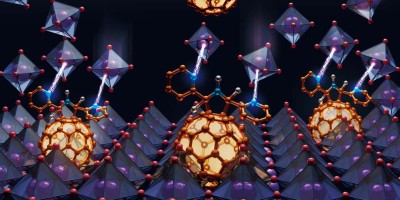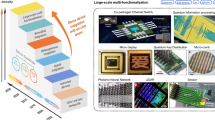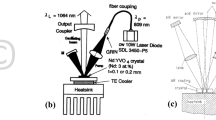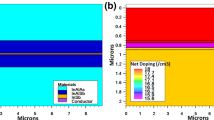Abstract
Efficient, low-threshold and compact semiconductor laser sources are under investigation for many applications in high-speed communications, information processing and optical interconnects. The best edge-emitting and vertical-cavity surface-emitting lasers have thresholds on the order of 100 µA (refs 1, 2), but dissipate too much power to be practical for many applications, particularly optical interconnects (Miller in Proc. IEEE 97:1166, 2009). Optically pumped photonic-crystal nanocavity lasers represent the state of the art in low-threshold lasers (Loncar et al. in Appl. Phys. Lett. 81:2680, 2002, Noda in J. Opt. Soc. Am. B 27:B1, 2010); however, to be practical, techniques to electrically pump these structures must be developed. Here, we demonstrate a quantum-dot photonic-crystal nanocavity laser in gallium arsenide pumped by a lateral p–i–n junction formed by ion implantation. Continuous-wave lasing is observed at temperatures up to 150 K. Thresholds of only 181 nA at 50 K and 287 nA at 150 K are observed—the lowest thresholds ever observed in any type of electrically pumped laser.
Similar content being viewed by others
Author information
Authors and Affiliations
Rights and permissions
About this article
Cite this article
Ellis, B., Mayer, M., Shambat, G. et al. Ultralow-threshold electrically pumped quantum-dot photonic-crystal nanocavity laser. Nature Photon 5, 297–300 (2011). https://doi.org/10.1038/nphoton.2011.51
Received:
Accepted:
Published:
Issue Date:
DOI: https://doi.org/10.1038/nphoton.2011.51
- Springer Nature Limited
This article is cited by
-
Ultra-low threshold continuous-wave quantum dot mini-BIC lasers
Light: Science & Applications (2023)
-
Assessment of structural, morphological, and optical properties of MnFe2O4 nanoparticles and MnFe2O4-layered 2D structures elaborated by e-beam technique
Journal of the Australian Ceramic Society (2023)
-
Group III–V element behaviour as a gain material in nano-lasers
Journal of Optics (2023)
-
Optical information processing using dual state quantum dot lasers: complexity through simplicity
Light: Science & Applications (2021)
-
Global optimization of an encapsulated Si/SiO\(_2\) L3 cavity with a 43 million quality factor
Scientific Reports (2021)





